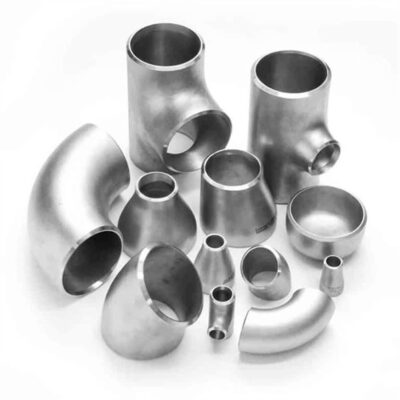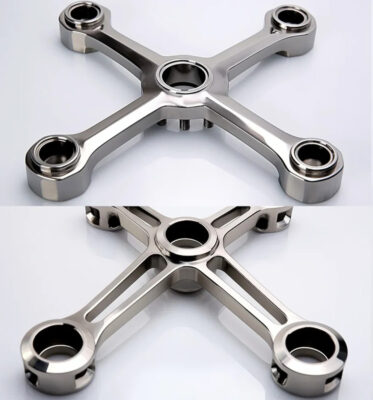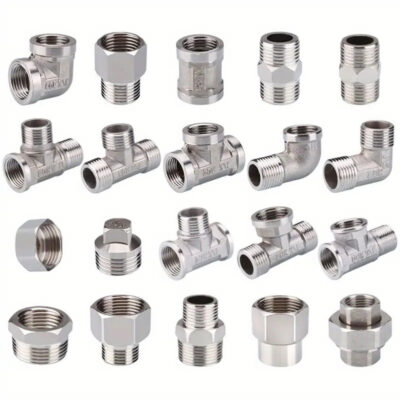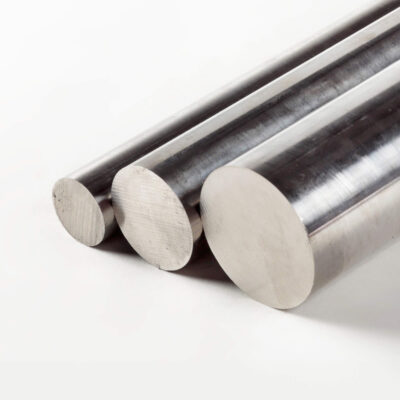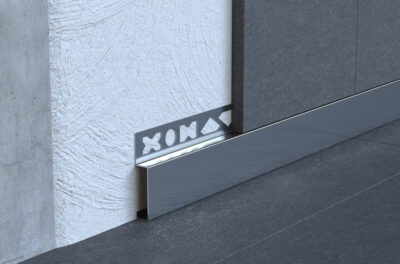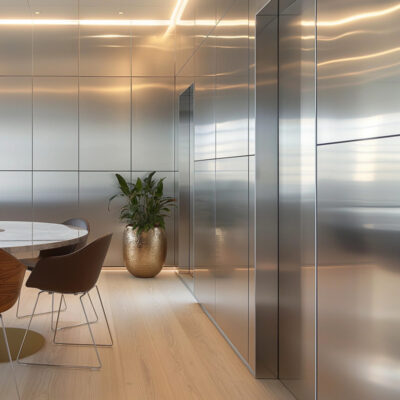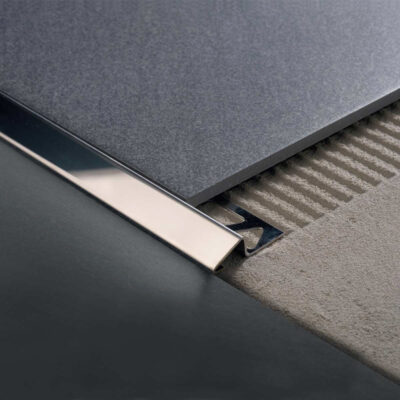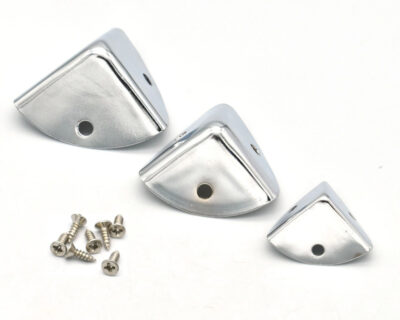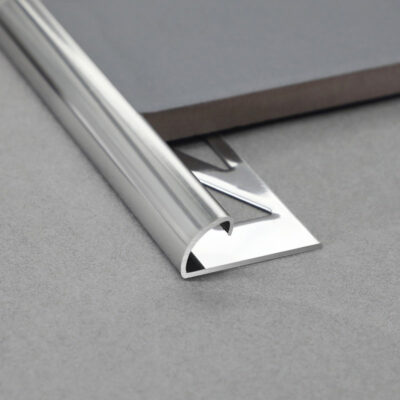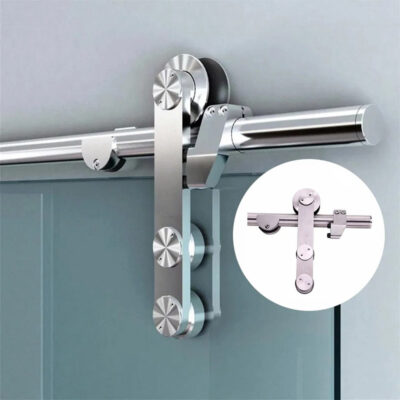The Complete Guide to Stainless Steel Pipe Fittings: Selection, Application, and Best Practices
The first time I walked through a major petrochemical facility in Houston, I was struck by the gleaming network of pipes and connections that seemed to extend endlessly in all directions. What appeared to be a chaotic maze was actually a precisely engineered system where every component, especially the stainless steel pipe fittings, played a critical role in maintaining safety, efficiency, and operational integrity. That experience fundamentally changed my understanding of industrial infrastructure and the crucial importance of seemingly small components.
Stainless steel pipe fittings represent the critical junctions in fluid transport systems across countless industries. These components might not capture headlines like breakthrough technologies do, but their selection and implementation directly impact system performance, safety, maintenance costs, and operational lifespan. From nuclear power plants to food processing facilities, these essential connectors must withstand everything from caustic chemicals to extreme temperatures while maintaining structural integrity and preventing leaks.
This article explores the multifaceted world of stainless steel pipe fittings, examining their types, applications, selection criteria, and installation considerations. Whether you’re an engineer specifying components for a new project, a maintenance professional troubleshooting system issues, or a procurement specialist evaluating options, understanding these critical components can lead to better decisions and improved system performance.
Understanding Stainless Steel Pipe Fittings: Fundamentals and Evolution
Stainless steel pipe fittings are engineered components designed to connect, redirect, or modify piping systems handling liquids, gases, and sometimes solids. Unlike carbon steel variants, these fittings contain a minimum of 10.5% chromium, creating a self-healing chromium oxide layer that provides excellent corrosion resistance—the defining characteristic that makes them “stainless.”
The history of these components traces back to the early 20th century when metallurgists first developed commercially viable stainless steel alloys. Harry Brearley discovered what we now recognize as stainless steel in 1913 while working on gun barrel erosion solutions. By the 1920s, the material found its way into industrial applications, with pipe fittings following shortly after as industries recognized the tremendous advantages over traditional materials.
Modern stainless steel pipe fittings come in various configurations to address specific flow requirements:
- Elbows (45° and 90°) change flow direction
- Tees create branch connections
- Couplings join straight pipe sections
- Reducers modify pipe diameter
- Unions allow for convenient disassembly
- Caps and plugs terminate lines
- Crosses create four-way connections
- Nipples connect close fittings
What makes these components particularly valuable is their versatility across end-connection types. A single fitting design might be manufactured with threaded ends, socket weld preparation, butt weld preparation, or flanged connections depending on the application requirements and industry standards.
During a recent project upgrading a coastal desalination plant, our team decided to replace the entire seawater intake manifold with super-duplex stainless steel fittings. The existing carbon steel components had corroded badly after just three years—a classic example where initial cost savings led to premature failure and much higher lifetime costs. This experience reinforced an important principle I’ve observed repeatedly: material selection for pipe fittings must consider the entire operational lifespan, not just upfront expenses.
Key Types and Applications of Stainless Steel Pipe Fittings
The diversity of stainless steel pipe fittings reflects the complexity of modern industrial systems. Each type serves specific functions and comes with its own selection considerations.
Buttweld Fittings
Buttweld fittings are designed for permanent connections, where the fitting is welded directly to the pipe. The weld penetrates the entire wall thickness, creating a strong, leak-tight joint with minimal flow disruption. These fittings excel in high-pressure, high-temperature applications where joint integrity is paramount.
Common industries using these fittings include:
- Oil and gas processing
- Chemical manufacturing
- Power generation
- Pharmaceutical production
I once consulted on a pharmaceutical clean steam system where we selected 316L stainless buttweld fittings exclusively. Despite higher installation costs, the absence of crevices, threads, or other potential contamination points made them ideal for maintaining product purity requirements.
Threaded Fittings
Threaded fittings offer quick installation and disassembly without specialized equipment. They feature internal or external threads matching standard pipe thread specifications (typically NPT in North America). While convenient, the thread design creates potential leak paths and stress concentration points.
These fittings are commonly found in:
- HVAC systems
- Smaller diameter utility services
- Lower-pressure applications
- Temporary installations
- Maintenance-intensive environments
Socket Weld Fittings
Socket weld fittings represent a middle ground between threaded and buttweld options. The pipe slides into a socket, where a fillet weld creates the seal. This design provides better pressure capabilities than threaded fittings while requiring less welding expertise than buttweld installations.
Socket weld fittings frequently appear in:
- Industrial instrument connections
- Small-diameter high-pressure systems
- Nuclear applications (with appropriate certifications)
- Hydraulic systems
Compression Fittings
Compression fittings create seals through mechanical pressure, typically using ferrules compressed against the pipe by a threaded nut. These connections allow for disassembly and are particularly useful for tubing systems.
You’ll find compression fittings in:
- Instrumentation systems
- Laboratory equipment
- Food processing equipment
- Residential plumbing
During my work with a major semiconductor manufacturer, we exclusively specified ultra-high-purity compression fittings for their process gas systems. The ability to create leak-tight connections without welding (which would introduce potential contamination) proved essential for maintaining the stringent cleanliness requirements of their manufacturing processes.
| Fitting Type | Pressure Rating | Temperature Limits | Installation Requirements | Best Applications |
|---|---|---|---|---|
| Buttweld | Very High | -320°F to 1500°F (-196°C to 816°C) | Skilled welders, radiography equipment | Critical systems, high-pressure, permanent installations |
| Threaded | Moderate | Up to 550°F (288°C) typical | Basic tools, thread sealant | Frequently serviced components, non-critical systems |
| Socket Weld | High | -320°F to 1200°F (-196°C to 649°C) | Welding equipment, moderate skill | Small bore lines, moderate to high pressure |
| Compression | Low to Moderate | Limited by seal material (typically under 400°F/204°C) | Hand tools, no special skills | Instrumentation, laboratory, easy disassembly needs |
Material Grades and Selection Criteria
The term “stainless steel” encompasses dozens of distinct alloys, each with unique properties. Selecting the appropriate grade depends on understanding both the operating environment and the functional requirements.
Austenitic Stainless Steel Grades
The 300-series austenitic stainless steels represent the most commonly specified grades for pipe fittings:
Type 304/304L (18% chromium, 8% nickel) serves as the workhorse grade for many applications. It offers good corrosion resistance in mild environments and maintains excellent mechanical properties across a wide temperature range. The “L” designation indicates low carbon content, reducing susceptibility to sensitization during welding.
Type 316/316L adds molybdenum to the alloy, significantly improving resistance to chloride pitting and crevice corrosion. This makes it particularly valuable in marine environments, chemical processing, and pharmaceutical applications. The premium over 304 typically ranges from 25-40%, but this cost difference pales compared to potential replacement expenses in challenging environments.
An interesting case arose during my consultation on a brewery expansion project. Initially, the client requested 304 fittings for their fermentation tank connections as a cost-saving measure. However, after analyzing their cleaning procedures, which used chlorinated sanitizing chemicals, we recommended 316L instead. The slight premium paid for these fittings prevented what would have almost certainly been premature pitting failure.
Duplex and Super Duplex Stainless Steels
These grades (like 2205, 2507) combine austenitic and ferritic microstructures, offering higher strength than austenitic grades while maintaining good corrosion resistance. The improved stress corrosion cracking resistance makes them excellent choices for:
- Offshore oil and gas applications
- Desalination plants
- Chemical processing with high chloride content
- Structural applications requiring higher strength
Ferritic and Martensitic Grades
These grades (400-series) generally offer less corrosion resistance than austenitic varieties but may provide advantages in specific applications:
- Higher hardness when needed
- Better resistance to stress corrosion cracking
- Generally lower cost
- Good high-temperature oxidation resistance
A metallurgist I regularly consult with explained an important consideration: “People often mistakenly view material selection as simply choosing the ‘best’ grade. In reality, it’s about finding appropriate balance points between corrosion resistance, mechanical properties, fabricability, availability, and cost.”
Selection Factors Beyond Grade
Several factors beyond basic grade selection affect fitting performance:
Surface Finish significantly impacts corrosion resistance, with smoother finishes providing fewer initiation sites for corrosion. Specifications may require particular surface treatments like electropolishing for hygienic applications.
Manufacturing Method (cast versus wrought) influences mechanical properties and sometimes corrosion resistance. Cast fittings generally cost less but may have more variable properties than wrought alternatives.
Wall Thickness Schedule determines pressure-handling capability, with common designations including SCH 10S, 40S, and 80S for stainless fittings. Each represents standardized dimensions balancing material usage against strength requirements.
Manufacturing Processes and Quality Standards
The manufacturing route for stainless steel pipe fittings significantly impacts their performance characteristics. Understanding these processes helps in making informed specification decisions.
Primary Manufacturing Methods
Forging involves shaping metal through compressive forces, typically while heated. This process:
- Creates dense, strong components with favorable grain structures
- Results in excellent mechanical properties
- Produces fittings with consistent wall thickness
- Commands premium pricing due to raw material and processing costs
Casting produces fittings by pouring molten metal into molds. This approach:
- Enables complex geometries difficult to achieve by other methods
- Generally costs less than forged alternatives
- May exhibit more porosity or inclusions than forged fittings
- Requires careful quality control to ensure consistent properties
Machining from bar stock creates some fitting types, particularly for smaller, precision components in instrumentation systems. This method:
- Provides excellent dimensional precision
- Works well for small production runs
- Generates significant material waste
- Results in relatively expensive finished products
Fabrication involves creating custom fittings by cutting, forming, and welding plate or pipe. While less common for standard components, this approach allows for:
- Custom geometries not available as standard items
- Short lead times when standard components aren’t readily available
- Design flexibility for unique applications
During a recent tour of a major stainless fitting manufacturer’s facility, their quality manager shared an insight worth noting: “We perform 100% radiographic testing on our high-pressure forged fittings—not because standards require it, but because our experience shows it prevents costly field failures. The additional inspection cost adds less than 5% to the unit price but eliminates almost all internal defect-related failures.”
Critical Industry Standards
The performance reliability of stainless steel pipe fittings depends heavily on adherence to established standards:
ASME B16 Series defines dimensional and performance requirements for various fitting types:
- B16.9 covers factory-made buttweld fittings
- B16.11 addresses forged fittings (socket-weld and threaded)
- B16.28 specifies requirements for short-radius elbows and returns
ASTM Standards define material requirements:
- A403 covers wrought austenitic stainless buttweld fittings
- A182 addresses forged products including threaded and socket weld fittings
- A351 specifies requirements for cast materials
MSS Standards from the Manufacturers Standardization Society provide additional specifications for specialty items not fully covered by ASME or ASTM.
This table summarizes important certification considerations:
| Application Area | Critical Standards | Key Certification Requirements | Inspection Documentation |
|---|---|---|---|
| General Industrial | ASME B16 Series, ASTM material specs | Material Test Reports (MTRs), dimensional compliance | MTRs, possible PMI verification |
| Oil & Gas | ASME B16 series, NACE MR0175/ISO 15156 | Material composition, hardness testing, sulfide stress cracking resistance | Full documentation package with traceability |
| Pharmaceutical | ASME BPE, 3-A Sanitary Standards | Surface finish requirements, material certification, electropolishing documentation | Extensive documentation including surface finish measurements |
| Nuclear | ASME Section III | Comprehensive material qualification, NQA-1 quality program | Complete quality assurance records with full traceability |
Installation Best Practices and Common Challenges
Even the highest quality stainless steel fittings will fail to perform if improperly installed. Several key practices separate successful installations from problematic ones.
Critical Installation Considerations
Material Handling starts before installation even begins. Stainless steel fittings require careful handling to preserve their corrosion resistance:
- Store in clean areas away from carbon steel components
- Maintain protective end caps until installation
- Use dedicated stainless steel tools to prevent cross-contamination
- Handle with clean gloves to avoid introducing contaminants
Proper Alignment prevents stress concentration that can lead to premature failure:
- Use appropriate equipment to align pipes and fittings before joining
- Allow for thermal expansion in system design
- Follow manufacturer’s recommendations for torque values on threaded connections
- Ensure consistent gap dimensions for welded joints
Joining Techniques must match both the fitting type and service conditions:
For threaded connections:
- Use appropriate thread sealant compatible with process fluid
- Avoid over-tightening, which can crack fittings
- Consider using backup wrenches to prevent system damage
For welded connections:
- Implement proper purging procedures to prevent oxidation
- Use filler metals matching or exceeding base material properties
- Follow qualified welding procedures with appropriate parameters
- Control heat input to minimize heat-affected zone impacts
A system designer I frequently collaborate with shared this insight: “The most common mistake I see is undertrained personnel installing stainless components using the same techniques they’d use for carbon steel. The higher thermal expansion rate of stainless requires different fitting allowances, and contamination during installation can compromise the very corrosion resistance you’re paying premium for.”
Common Installation Challenges
Galvanic Corrosion occurs when dissimilar metals create an electrochemical cell in the presence of an electrolyte. To prevent this:
- Use dielectric fittings when connecting stainless to dissimilar metals
- Apply appropriate coatings or barriers at transition points
- Consider the entire galvanic series when selecting mixed materials
Stress Corrosion Cracking (SCC) represents a particular concern in chloride-containing environments:
- Select appropriate grades based on chloride exposure
- Minimize residual stresses through proper fabrication techniques
- Consider stress relief treatments for critical applications
- Avoid creating crevices that can concentrate chlorides
Thread Galling occurs when stainless threads seize during assembly:
- Apply appropriate anti-galling compounds during assembly
- Consider using dissimilar stainless grades for mating components
- Maintain slow, consistent motion during assembly
- Avoid starting and stopping during threading operations
During a troubleshooting assignment at a coastal processing facility, I encountered extensive thread galling on newly installed instrument connections. The maintenance team had used standard pipe wrenches and petroleum-based lubricants—approaches that work fine for carbon steel but proved disastrous with stainless components. Implementing proper lubricants and installation tools eliminated the issue entirely.
Emerging Trends and Innovations in Stainless Steel Fittings
The stainless steel fitting industry continues evolving to meet changing market demands and technological capabilities.
Advanced Manufacturing Technologies
Additive Manufacturing (3D printing) has begun transforming how certain specialty fittings are produced:
- Enables complex internal geometries impossible with conventional manufacturing
- Allows rapid prototyping of custom solutions
- Reduces material waste compared to subtractive methods
- Currently limited to specialized, lower-volume applications due to cost
Improved Casting Techniques like investment casting with vacuum assistance produce higher-integrity cast fittings:
- Reduces inclusion content and porosity
- Improves surface finish quality
- Narrows the performance gap between cast and forged products
- Provides cost advantages for complex geometries
Material Innovations
Lean Duplex Alloys offer improved corrosion resistance compared to standard austenitic grades, but at lower cost than traditional duplex materials:
- Grades like LDX 2101 provide alternatives in moderately corrosive environments
- Reduced nickel content improves price stability
- Maintains good mechanical properties and fabricability
- Offers significant life-cycle cost advantages in appropriate applications
Surface Treatment Advancements enhance performance characteristics:
- Electropolishing techniques remove surface contaminants and improve corrosion resistance
- Nitriding processes increase surface hardness for wear resistance
- Specialized passivation protocols optimize chromium oxide layer formation
An industry colleague specializing in material science noted during a recent conference, “The most exciting development isn’t a single breakthrough but the increasingly sophisticated ability to tailor very specific alloy compositions for niche applications. We’re seeing stainless grades developed for particular industries rather than trying to adapt general-purpose materials.”
Sustainability Considerations
The stainless steel fitting industry faces increasing pressure to address sustainability concerns:
- Material recovery programs capture manufacturing scrap
- Lifecycle assessment demonstrates long-term environmental advantages
- Increasing recycled content in new production
- Development of manufacturing techniques with reduced energy requirements
E-Sang and other forward-thinking manufacturers have begun implementing comprehensive sustainability programs that examine everything from raw material sourcing to end-of-life reclamation possibilities.
Cost Considerations and ROI Analysis
The true cost of stainless steel pipe fittings extends far beyond initial purchase price. Understanding the complete cost picture requires examining several factors:
Initial vs. Lifetime Cost Analysis
A comprehensive evaluation should include:
Capital Expenses:
- Material procurement costs
- Installation labor and equipment
- Quality assurance and testing
- Engineering and design time
Operational Expenses:
- Maintenance requirements
- Inspection frequency and techniques
- Repair and replacement cycle expectations
- System downtime during servicing
Risk-Related Costs:
- Failure consequences (safety, environmental, production)
- Insurance implications
- Regulatory compliance considerations
- Reputation impacts
I worked with a food processing facility that initially selected 304 stainless fittings for a clean-in-place system purely based on capital budget constraints. Within 18 months, they faced significant pitting corrosion due to chlorinated cleaning solutions. The subsequent replacement with 316L fittings cost nearly four times the original price difference—not counting production losses during the emergency shutdown.
Value Engineering Approaches
Several strategies can optimize the cost-performance balance:
Selective Grade Utilization applies premium materials only where needed:
- Using higher alloys at critical points of chloride exposure
- Standard grades in less demanding sections
- Transitioning between grades at appropriate system boundaries
Standardization reduces inventory requirements and leverages volume pricing:
- Establishing preferred fitting types and manufacturers
- Limiting unnecessary variety in specifications
- Creating standard material-to-application matrices for consistent selection
Maintenance Optimization based on material selection:
- Adjusting inspection intervals based on material performance expectations
- Implementing appropriate preventive measures for specific alloys
- Training maintenance personnel on material-specific requirements
This comparative analysis illustrates material selection impacts:
| Material | Initial Cost Index | Expected Service Life (years) | Maintenance Requirements | Annualized Total Cost |
|---|---|---|---|---|
| Carbon Steel | 100 | 5-8 in corrosive environments | High: regular inspection, painting, eventual replacement | Higher than 304 after ~4 years |
| 304 Stainless | 180-220 | 10-15 in mild environments | Moderate: periodic inspection, occasional cleaning | Higher than 316L in chloride environments |
| 316L Stainless | 240-280 | 15-25+ in many environments | Low: minimal inspection, high resistance to common corrodents | Lowest long-term cost in challenging environments |
| Super Duplex | 350-450 | 25+ in severe environments | Very low in appropriate applications | Most economical for severe service, wasteful for mild conditions |
Case Studies: Real-World Applications
Examining actual implementations provides valuable insights into practical selection and application considerations.
Coastal Desalination Plant
A Middle Eastern desalination facility faced severe challenges with their seawater intake manifold system. The original design specified 316L stainless fittings, but actual installation substituted lower-grade components that rapidly deteriorated.
Challenge: Extreme chloride exposure from seawater combined with elevated temperatures (35°C/95°F) created an aggressively corrosive environment.
Solution: Complete replacement using super duplex (UNS S32750) fittings with enhanced surface treatment.
Outcome: The new system has operated for seven years without corrosion issues, compared to the 18-month failure of the original components. Despite a 60% higher initial material cost, the elimination of downtime and replacement expenses resulted in significant overall savings.
Key learning: Material verification during installation is critical to ensure specified materials are actually used.
Pharmaceutical Manufacturing
A European pharmaceutical manufacturer needed a high-purity water distribution system for injectable product manufacturing.
Challenge: Required absolutely sterile conditions, prevention of microbial growth, and elimination of potential contamination sources.
Solution: Implemented electropolished 316L stainless fittings with orbital welding throughout. Selected sanitary-design components with zero dead legs to prevent bacterial harborage.
Outcome: System passed rigorous validation protocols and has maintained water quality standards for over a decade. The higher initial investment in premium fittings and installation techniques yielded long-term regulatory compliance and product quality benefits.
A quality manager from this facility later told me, “When you’re producing medications that people’s lives depend on, the fitting selection becomes about more than basic functionality—it’s about absolute reliability and confidence in system integrity.”
Conclusion: Making Informed Decisions
Selecting the appropriate stainless steel pipe fittings involves balancing numerous factors: material properties, manufacturing methods, installation considerations, system requirements, and economics. While no universal “best” choice exists, understanding the interplay between these factors enables informed decision-making tailored to specific applications.
Several principles emerge as particularly valuable:
First, consider the entire lifecycle cost rather than focusing exclusively on initial expenses. The least expensive fitting often proves costliest when maintenance, replacement, and downtime are factored in.
Second, match material selection to specific environmental conditions rather than defaulting to familiar options. The corrosion resistance advantage of upgrading from 304 to 316L is dramatic in chloride-containing environments but potentially unnecessary in others.
Third, recognize that installation quality often impacts performance more than material grade. The finest super duplex fitting will fail prematurely if improperly installed, while correctly installed standard grades often exceed expected service life.
Finally, stay informed about emerging materials and technologies that may offer advantages for particular applications. The stainless steel fitting industry continues evolving, with new options regularly becoming commercially available.
By applying these principles and the detailed information presented throughout this article, engineers, maintenance professionals, and procurement specialists can make decisions that optimize both performance and value in their stainless steel piping systems.
Frequently Asked Questions about Stainless Steel Pipe Fittings
Q: What are Stainless Steel Pipe Fittings and what are they used for?
A: Stainless Steel Pipe Fittings are components used to connect, modify, or end piping systems. They are widely used in industries such as oil and gas, chemical processing, and food and beverage due to their excellent corrosion resistance and durability. These fittings can be found in various forms, including elbows, tees, couplings, and flanges, each serving specific purposes like changing pipe direction or joining multiple pipes together.
Q: What types of Stainless Steel Pipe Fittings are available?
A: There are several types of Stainless Steel Pipe Fittings available, including:
- Elbows: Used to change the direction of a pipe.
- Tees: Allow the joining of three pipes in a T shape.
- Couplings: Connect two pipes together.
- Flanges: Attach pipes to other equipment like tanks or pumps.
- Reducers: Connect pipes of different diameters.
Q: What are the advantages of using Stainless Steel Pipe Fittings?
A: Stainless Steel Pipe Fittings offer several advantages:
- Excellent Corrosion Resistance: Suitable for harsh environments exposed to chemicals and extreme temperatures.
- Durability: Can withstand high pressures and last longer.
- Easy to Clean and Maintain: Ideal for industries requiring cleanliness, like food processing.
- Versatility: Available in various shapes and sizes to suit different applications.
Q: Are Stainless Steel Pipe Fittings suitable for high-pressure applications?
A: Yes, Stainless Steel Pipe Fittings are suitable for high-pressure applications. They are designed to handle extreme pressures and temperatures, making them a reliable choice for industries such as oil and gas and chemical processing. Their durability and strength ensure they can support heavy-duty operations without compromising performance.
Q: How do I choose between different grades of Stainless Steel Pipe Fittings?
A: Choosing between different grades of Stainless Steel Pipe Fittings depends on your specific application needs. For instance, 304 grade stainless steel is commonly used in everyday plumbing due to its general corrosion resistance, while 316 grade offers better resistance to pitting and crevice corrosion, making it ideal for environments exposed to chlorides. Consider factors like the intended use environment and necessary corrosion resistance when selecting a grade.


